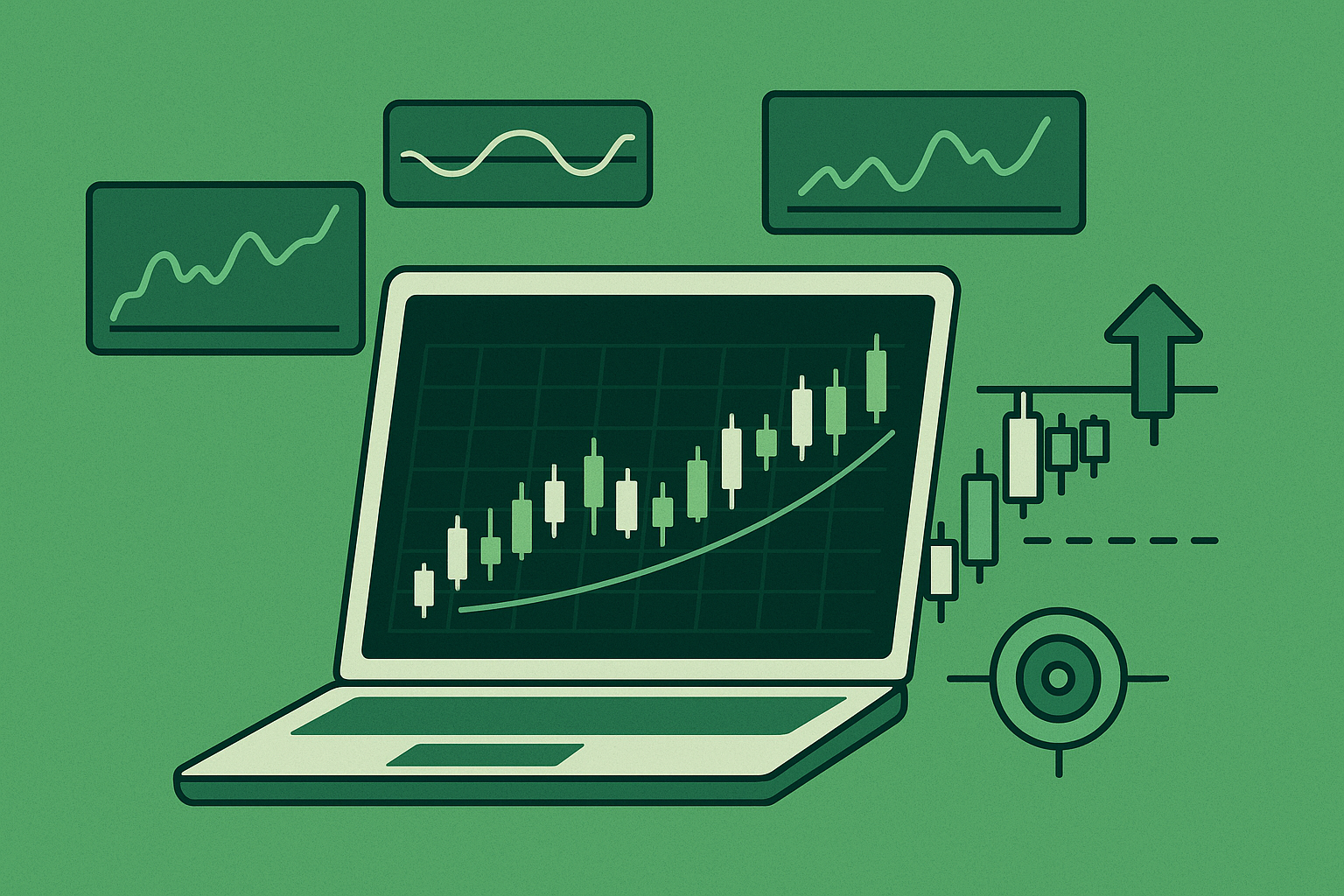
Gaining expertise in currency markets demands sustained effort and strategic practice. Most individuals require 6–12 months of daily study to grasp core concepts like technical patterns and economic indicators. Those committing 2–4 hours daily often develop functional skills faster than casual learners, though market mastery typically extends beyond a year.
Success hinges on balancing theoretical knowledge with real-world application. Analyzing charts, managing risks, and maintaining emotional control form the foundation of sustainable trading. Prior experience in financial markets or analytical fields may shorten the initial learning phase for some traders.
The path diverges sharply between basic competence and consistent profitability. While foundational skills emerge within months, refining strategies through evolving market conditions often takes 1–2 years. Modern educational tools and trading platforms accelerate skill development but cannot replace hands-on experience.
Key Takeaways
- Currency market proficiency typically requires 6–24 months of dedicated study and practice
- Daily commitment of 2–4 hours accelerates skill development compared to sporadic learning
- Technical analysis and risk management form the core of effective trading strategies
- Market conditions and psychological discipline separate theoretical knowledge from profitable execution
- Continuous adaptation remains essential as global economic factors reshape trading landscapes
Understanding the Basics of Forex Trading
Navigating global currency exchanges starts with mastering fundamental tools and language. This foundation separates informed decisions from speculative guesses in fast-paced markets.
Key Terminology and Concepts
Pips measure price changes down to 0.0001 for most pairs. A spread reflects the gap between buying and selling prices – tighter spreads often signal better liquidity. Standard lot sizes equal 100,000 currency units, though mini/micro lots allow smaller trades.
Leverage ratios like 50:1 amplify both gains and risks. Margin requirements dictate how much capital traders must hold to maintain positions. These mechanics demand disciplined risk management strategies.
Overview of Currency Pairs and Trading Mechanics
Major pairs like EUR/USD dominate forex market activity with high liquidity. Exotic pairs involve less common currencies and wider spreads. Prices react to economic reports, geopolitical shifts, and central bank policies.
Three primary order types shape execution strategies:
- Market orders execute instantly at current prices
- Limit orders trigger at specified levels
- Stop-loss orders automatically close losing positions
Commercial banks and institutional traders drive significant currency flows, while retail participants access markets through online platforms. Understanding these dynamics helps interpret price movements across Asian, European, and US trading sessions.
The Journey from Beginner to Advanced Trader
Mastering currency markets follows a structured progression requiring distinct skill development phases. Traders evolve through three critical competency levels, each demanding specific focus areas and practical application.
Stages of Learning Forex
Newcomers typically spend their initial three months absorbing market fundamentals. Essential knowledge includes understanding exchange mechanisms, major currency pairs, and basic economic drivers like inflation rates.
| Stage | Duration | Focus Area | Key Tools |
|---|---|---|---|
| Foundation | 1-3 months | Market structure | Economic calendars |
| Skill Building | 3-6 months | Strategy development | Backtesting software |
| Execution | 6+ months | Live trading | Risk management tools |
Intermediate traders shift focus to technical analysis patterns and historical data testing. This phase often reveals whether a strategy can withstand volatile market conditions.
Transitioning from Demo Accounts to Live Trading
Simulated accounts provide safe environments to test strategies without financial risk. Successful beginners typically log 100+ demo trades before handling real money.
The switch to live markets requires emotional control drills. Start with micro-lots representing 1% of capital. Gradually increase position sizes as consistency improves over several months.
Seasoned traders emphasize journaling every decision during this critical process. Documenting wins and losses accelerates learning while reinforcing disciplined habits essential for long-term success.
How Long Does It Take to Learn Forex? – Key Factors to Consider

Prior financial experience acts as a turbocharger for skill development. Traders with economics backgrounds or stock market exposure typically decode currency patterns 30-40% faster than novices. This advantage stems from familiarity with terms like leverage ratios and macroeconomic indicators.
Daily practice duration separates rapid progress from stagnation. Those investing 2-4 focused hours daily often achieve basic competence in 5-8 months. Sporadic learners might require 18+ months to reach similar milestones.
Educational quality creates dramatic differences in outcomes. Professional trading courses with structured curricula outperform free YouTube tutorials by 58% in skill retention metrics. Mentorship programs further compress learning curves through personalized feedback loops.
Strategy complexity dictates practice requirements. Simple moving average systems demand 80-120 hours of backtesting. Advanced algorithmic approaches might need 500+ hours across multiple market cycles. Analytical strengths help some traders process chart patterns 25% faster than peers.
Consistent routines prove more effective than marathon sessions. Thirty-minute daily chart reviews combined with weekly strategy tests build sustainable habits. This disciplined approach reinforces concepts better than irregular eight-hour weekend study binges.
The Role of Technical and Fundamental Analysis
Market navigation demands dual analytical lenses that decode price movements and economic forces. Traders who master these complementary approaches gain significant advantages in predicting currency fluctuations.

Technical Analysis Techniques
Chart patterns reveal hidden market psychology through formations like head-and-shoulders or double tops. Three essential tools dominate this discipline:
- Moving averages identify trend directions
- RSI gauges overbought/oversold conditions
- Fibonacci retracements predict reversal zones
Pattern recognition skills typically solidify after 300+ hours of screen time. Most traders achieve basic proficiency within 5 months of daily chart reviews.
Fundamental Analysis Insights
Economic data releases create seismic market shifts. Key indicators include:
| Report Type | Frequency | Market Impact |
|---|---|---|
| CPI Inflation | Monthly | High |
| Interest Rates | Quarterly | Extreme |
| GDP Growth | Quarterly | Moderate-High |
Mastering fundamental analysis requires tracking geopolitical news and central bank communications. Traders often spend 8-10 months learning to interpret these complex relationships effectively.
Combining both methods creates robust decision frameworks. Technical signals gain credibility when aligned with fundamental drivers, while economic data finds precise entry points through chart techniques. This synergy separates reactive traders from strategic market participants.
The Importance of Daily Time Commitment and Practice
Consistent daily effort separates successful currency traders from perpetual learners. Research shows market participants dedicating 2-4 focused hours daily often achieve operational readiness in 3-6 months, while those allocating under 60 minutes frequently require 12+ months. This disparity highlights the non-negotiable relationship between structured practice and skill acquisition.
Structuring a Consistent Learning Routine
Effective traders divide their study time into three core components:
- Market analysis (40%): Chart pattern recognition and economic calendar reviews
- Strategy testing (35%): Backtesting systems across multiple market conditions
- Skill refinement (25%): Journaling trades and analyzing past decisions
Short daily sessions outperform marathon weekend studies. Fifteen-minute price action reviews each morning build pattern recognition faster than sporadic three-hour sessions. Mobile trading apps enable professionals to monitor positions during commutes or breaks.
| Daily Commitment | Skill Milestone | Typical Timeline |
|---|---|---|
| 30-60 minutes | Basic terminology | 4-6 months |
| 2-3 hours | Consistent demo results | 3-5 months |
| 4+ hours | Live account readiness | 2-4 months |
Quality practice demands eliminating distractions. Traders using noise-canceling headphones during study sessions report 28% better information retention. Evening review sessions solidify daily lessons through spaced repetition techniques.
Progressive learning paths yield better results than random exploration. Start with candlestick patterns before advancing to Fibonacci retracements. Master risk management principles prior to experimenting with leverage. This structured approach prevents cognitive overload while building durable expertise.
Risk Management and Trading Psychology
Market success hinges on mental discipline as much as technical skill. While charts and indicators capture attention, 78% of failed traders cite psychological factors as their primary downfall according to industry studies. This critical aspect demands equal focus to strategy development.
Managing Emotions in Trading
Fear and greed sabotage more accounts than poor analysis. Traders typically require 6-12 months to build emotional resilience against market fluctuations. Key techniques include:
| Emotional Challenge | Practical Solution | Implementation Time |
|---|---|---|
| Revenge trading | Mandatory 24-hour cooling period | Immediate |
| Overconfidence | 3-trade maximum per strategy | 2-4 weeks |
| Loss aversion | Pre-set stop-loss orders | 1 trading session |
Professional traders treat each decision as part of a statistical series rather than personal validation. This mindset reduces impulsive reactions to unexpected price movements.
Establishing a Solid Trading Plan
A robust trading strategy acts as both roadmap and emotional anchor. Essential components include:
- Maximum 2% risk per trade
- Clear entry/exit triggers
- Weekly performance reviews
Seasoned market participants spend 30-45 minutes daily updating their plans to reflect changing conditions. This discipline prevents emotional decisions during volatile sessions while protecting trading funds.
Practical Training: From Demo Accounts to Real Trading
Building trading expertise requires deliberate skill application across simulated and live environments. Demo accounts serve as laboratories for refining techniques before risking capital.
Benefits of Practicing in a Demo Environment
Virtual trading platforms let traders test strategies across historical data and live market feeds. This risk-free space reveals how economic news impacts currency pairs without financial consequences. Many discover flawed risk management habits during this phase.
Extended demo periods expose users to diverse scenarios – from stable ranges to volatile breakouts. Six months of simulated trading typically builds muscle memory for order execution and platform navigation.
Strategies for a Smooth Live Trading Transition
Transitioning to real accounts demands phased scaling. Start with micro-lots representing 0.5-1% of capital. This approach lets traders experience emotional triggers while protecting their balance.
Successful shifts require maintaining demo practice alongside live trade execution. Compare performance metrics between environments to identify psychological gaps. Documenting both wins and losses accelerates knowledge retention.
Seasoned professionals recommend dedicating 30% of practice time to reviewing past trades. This habit sharpens decision-making skills while reinforcing disciplined market participation.
FAQ
What factors influence the time required to master forex trading?
The learning curve depends on prior financial knowledge, time invested daily, quality of educational resources, and adaptability to market fluctuations. Traders who practice consistently with demo accounts and study price action often progress faster.
Why is understanding currency pairs critical for beginners?
Currency pairs dictate market behavior and trading costs. Familiarity with majors like EUR/USD or GBP/JPY helps traders analyze liquidity, spreads, and geopolitical influences, forming the foundation for strategic decisions.
How does technical analysis differ from fundamental analysis in forex?
Technical analysis focuses on chart patterns, indicators, and historical price data to predict trends. Fundamental analysis evaluates economic data, interest rates, and news events. Successful traders often blend both approaches.
Can demo accounts accelerate the learning process?
Yes. Platforms like MetaTrader 4 allow risk-free practice with virtual funds. Demo environments help refine entry/exit strategies, test trading plans, and build confidence before risking real capital.
What role does psychology play in becoming a proficient trader?
Emotional discipline prevents impulsive decisions driven by greed or fear. Techniques like journaling trades and setting stop-loss orders help maintain objectivity, a skill that often takes months to develop.
How much daily practice is recommended for steady progress?
Dedicate 1–2 hours daily to studying charts, reviewing economic calendars, and analyzing trades. Consistency matters more than marathon sessions—regular exposure sharpens pattern recognition and decision-making speed.
What common mistakes prolong the learning phase for new traders?
Overtrading, ignoring risk-reward ratios, and neglecting macroeconomic trends are frequent pitfalls. Beginners should prioritize mastering 2–3 strategies rather than chasing every market movement.
When should traders transition from demo to live accounts?
Move to live trading after consistently profitable demo results over 3–6 months. Start with micro-lots to manage real-money pressure while applying proven risk management rules.
Further Reading
- BabyPips – School of Pipsology
One of the most comprehensive beginner guides to learn forex step by step:
👉 https://www.babypips.com/learn/forex - Investopedia – Forex Trading for Beginners
A solid introduction to forex basics, trading strategies, and key market concepts:
👉 https://www.investopedia.com/articles/forex/06/forexforbeginners.asp - DailyFX – How Long Does It Take to Learn Forex Trading?
A practical breakdown of what influences the forex learning curve:
👉 https://www.dailyfx.com/education/beginner/how-long-to-learn-forex-trading.html

